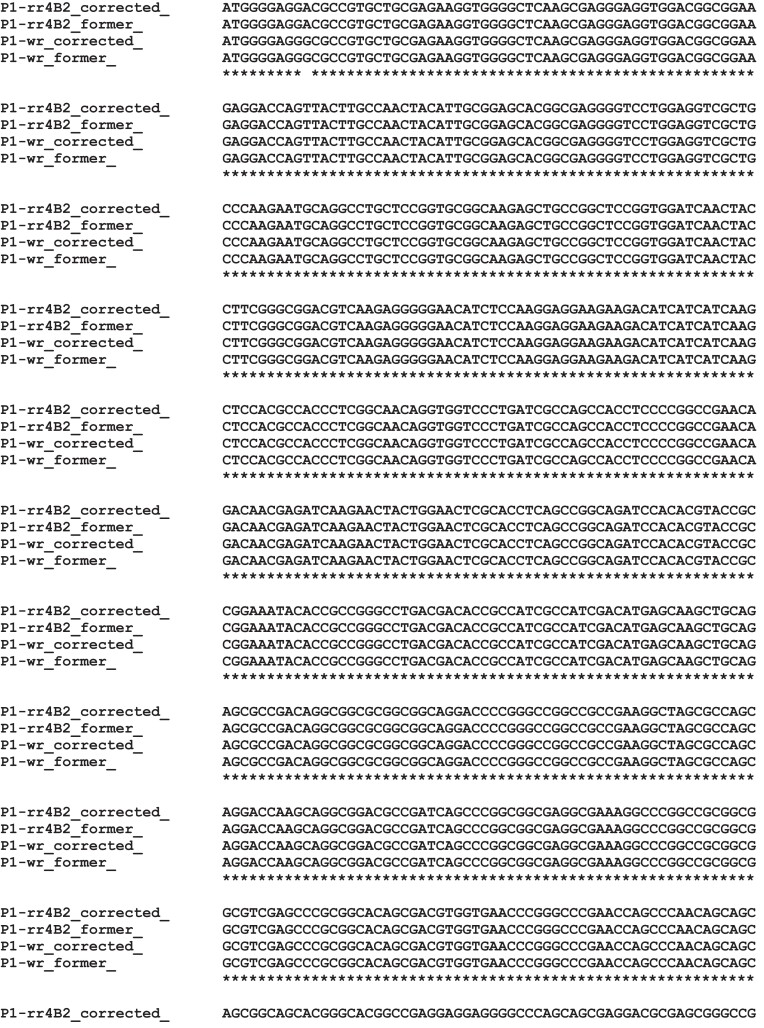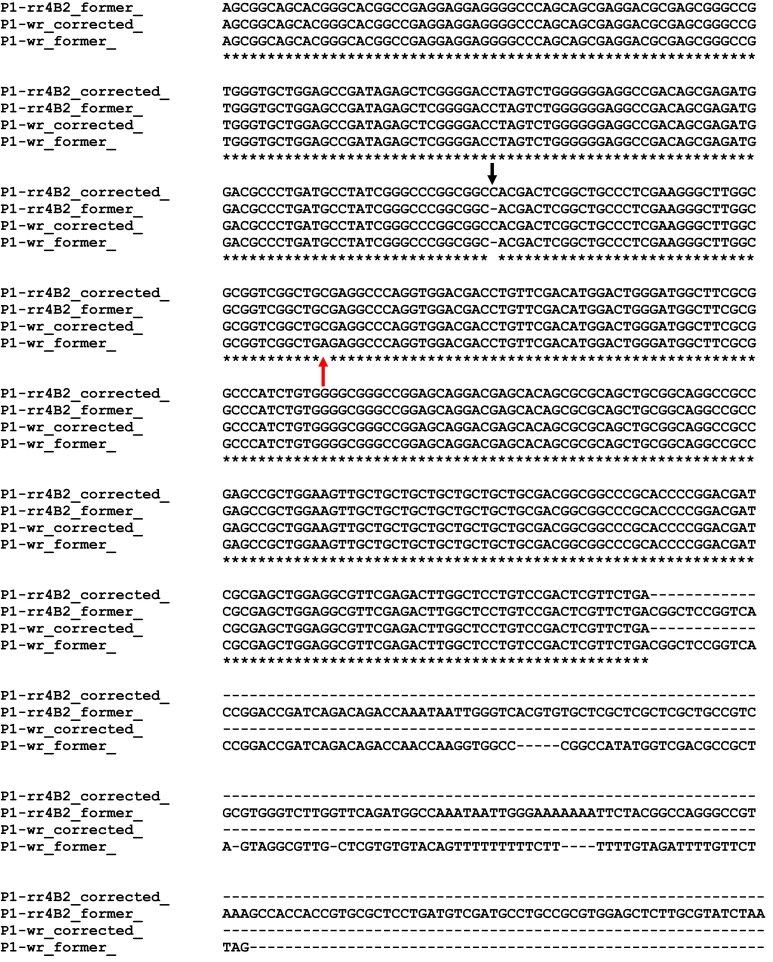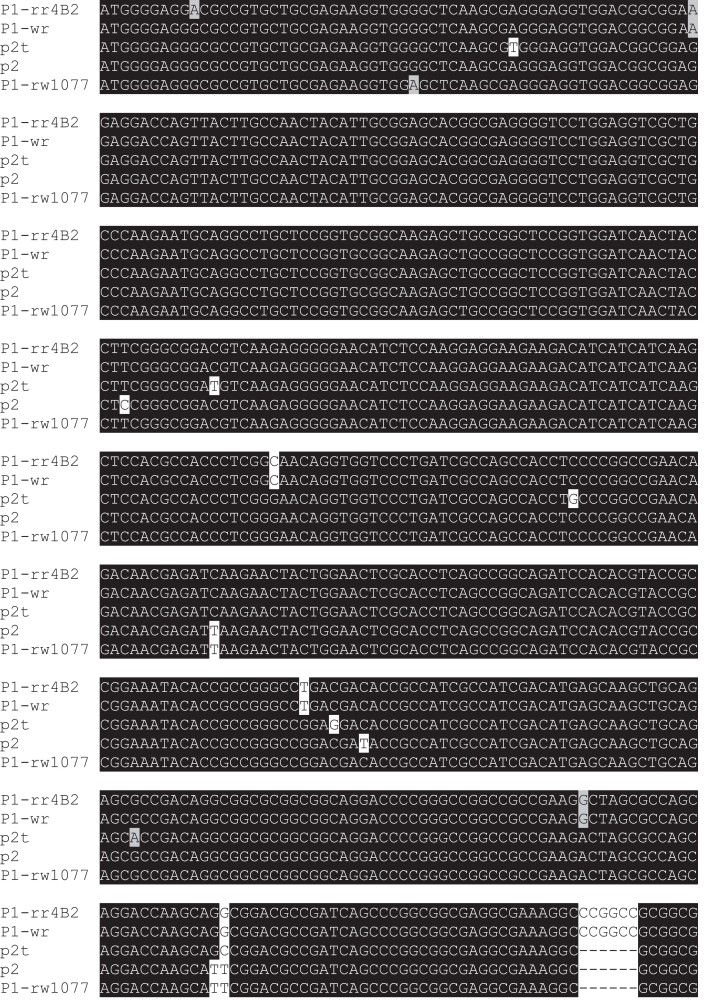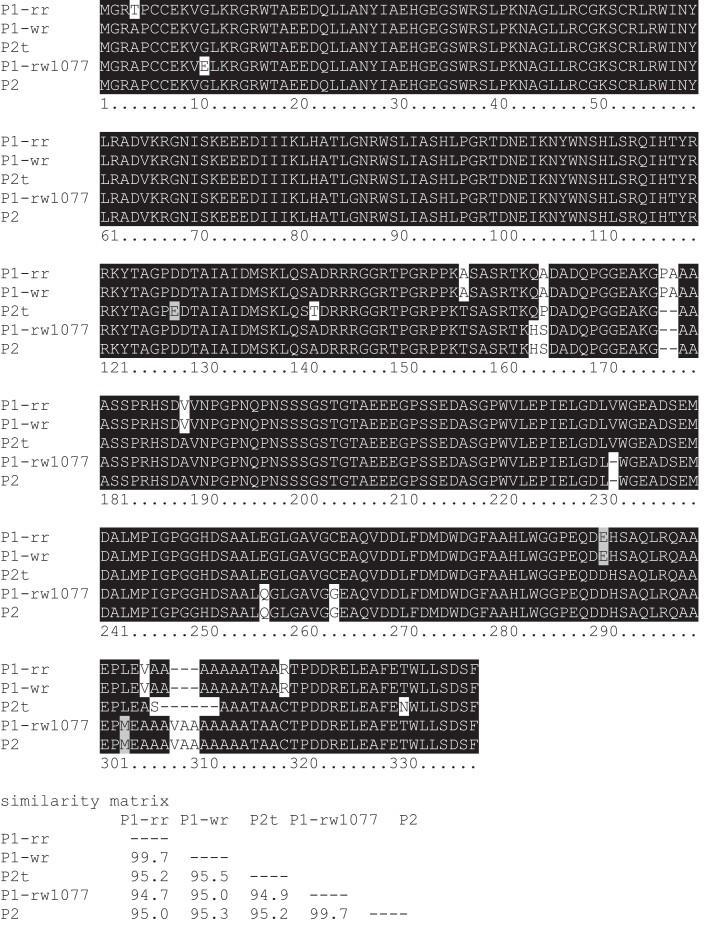CORRECTION TO: S Chopra, P Athma, T Peterson, Alleles of the maize P gene with distinct tissue specificities encode Myb-homologous proteins with C-terminal replacements., The Plant Cell, Volume 8, Issue 7, July 1996, Pages 1149–1158, https://doi.org/10.1105/tpc.8.7.1149
AND: Peifen Zhang, Surinder Chopra, Thomas Peterson, A Segmental Gene Duplication Generated Differentially Expressed myb-Homologous Genes in Maize, The Plant Cell, Volume 12, Issue 12, December 2000, Pages 2311–2322, https://doi.org/10.1105/tpc.12.12.2311
We previously reported (Figure 5 in Chopra, Athma and Peterson, 1996) that the maize P1-rr4B2 and P1-wr alleles encode proteins with distinct C-terminal sequences. However, Goettel and Messing (2009) reported that the P1-rr- and P1-wr- encoded proteins differ only at the fourth amino acid residue, and that the proteins are otherwise identical. We have checked these results by additional sequencing of genomic P1-rr4B2 and P1-wr cDNA clones, and we agree that our original result is incorrect. This error was caused by a sequencing artifact due to high GC content in P1 exon 3. As shown in Figure 1, the open reading frames of P1-rr4B2 and P1-wr were shifted by this artifactual single nucleotide indel polymorphism (indicated by black arrow in Figure 1). There is an additional difference (A instead of C) in the previously-reported P1-wr sequence, located 40 bp downstream of the artifactual indel site (indicated by red arrow in Figure 1). This single substitution does not alter the amino acid sequence. Based on the corrected sequence, the P1-rr- and P1-wr-encoded proteins have identical C-terminal sequences.
Figure 1.
Sequences of P1-rr4B2 and P1-wr cDNA clones.
Based on the errors described above, we also reported erroneous alignments of maize and teosinte p-related genes (Figure 5 in Zhang, Chopra and Peterson, 2000). The corrected sequences indicate that the maize P1-rr and P1-wr alleles share high sequence similarity with a third maize p1 allele (P1-rw1077; Zhang and Peterson 2005), the maize paralog p2, and a p-homologous gene from teosinte (p2t (over 96% at the nucleotide level; Figure 2). They all encode very similar C-terminal regions and differ only by a few amino acid substitutions and small indel polymorphisms (Figure 3). These sequence corrections do not affect the hypotheses or conclusions of Zhang et al. 2000. Sequence similarities were estimated using MEGA 2 software package.
Figure 2.
Alignment of maize p1 and p2 alleles.
Figure 3.
Alignment and comparison of proteins encoded by maize p1 and p2 alleles.
We apologize for these errors and appreciate the opportunity to offer this correction. We thank Dr. Feng Zhang (zhangumn@umn.edu) for sequence analysis of maize and teosinte alleles, and Dr. Erich Grotewold (grotewol@msu.edu) for sequence data and discussions.
Sincerely,
Surinder Chopra, sic3@psu.edu
Peifen Zhang, pfzhang@yahoo.com
Thomas Peterson, thomasp@iastate.edu
(We regret that Co-Author Prasanna Athma is deceased)







